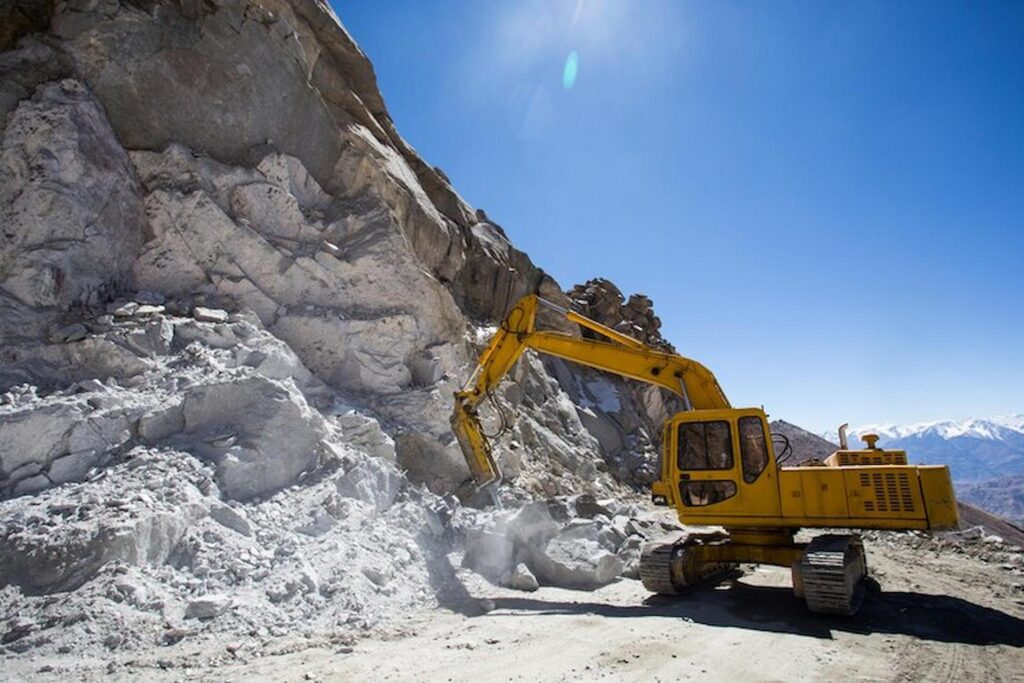Want to join the lucrative ATM business? Our comprehensive guide on how to purchase an ATM in 2024 covers everything you need to know, from initial considerations to operational tips.
The ATM (Automated Teller Machine) business is an often-overlooked yet highly profitable venture that offers a passive income stream. With the advent of new technology and increasing demand for convenient cash access, purchasing an ATM can be a wise investment. Whether you’re a small business owner looking to boost foot traffic or an entrepreneur seeking a new income source, understanding the intricacies of buying an ATM is crucial. This guide will walk you through every step, ensuring you make an informed decision and start your ATM business on the right foot.
Exploring the ATM Business Model
Before buying an ATM, it’s essential to understand its business model. ATMs generate revenue primarily through surcharge fees charged to users for withdrawals. Depending on the location and user traffic, these fees can range from $2 to $5. Additionally, some ATM operators earn interchange fees from the cardholder’s bank. Knowing these revenue streams helps project potential earnings and ROI (Return on Investment).
Explanation
Understanding the ATM business model is fundamental to making informed decisions. The primary income source for ATM owners is the surcharge fees, which can be lucrative in high-traffic areas. For instance, placing an ATM in a busy convenience store or a tourist spot can lead to hundreds of transactions daily, translating to substantial monthly income. Additionally, although smaller than surcharges, interchange fees provide a steady income stream, further boosting profitability. Understanding these revenue mechanisms allows potential buyers to estimate earnings and assess the viability of different locations. It also helps in setting realistic financial goals and expectations.
Assessing Your Financial Capacity
Purchasing an ATM involves an initial investment that varies based on the machine’s type and features. Essential ATMs can cost between $2,000 and $3,000, while more advanced models with enhanced security and technology can exceed $8,000. Besides the purchase price, consider additional costs like installation, maintenance, cash replenishment, and transaction processing fees.
Explanation
Evaluating your financial capacity is crucial before entering the ATM business. Start by determining your budget for purchasing the machine itself. While entry-level machines are cheaper, they might lack advanced features such as EMV (Europay, MasterCard, and Visa) compliance, which is crucial for security. Moreover, installation costs can vary depending on the location’s complexity, and regular maintenance is necessary to ensure uptime and reliability. Additionally, consider the cost of cash replenishment, either managed by yourself or outsourced to a third-party service. Understanding these expenses upfront helps create a comprehensive budget and prevents unexpected financial strain.
Choosing the Right ATM Type
ATMs come in various types, including freestanding, wall-mounted, through-the-wall, and portable units. Your choice should depend on the intended location and specific needs of the business or area.
Explanation
Selecting the right type of ATM is pivotal to the success of your venture. Freestanding ATMs are versatile and can be placed in various locations, such as retail stores, malls, and gas stations. Wall-mounted and through-the-wall units, on the other hand, are ideal for locations with limited space, offering a more permanent and secure installation. Portable ATMs are suitable for temporary events like fairs and festivals. Consider the location’s foot traffic, available space, and security requirements when choosing an ATM type. The right machine not only fits the physical space but also aligns with the usage patterns of the target audience, ensuring optimal performance and revenue generation.
Selecting a Reliable ATM Provider
Partnering with a reputable ATM provider is essential for a smooth purchase and setup process. Look for providers with a proven track record, comprehensive customer support, and favourable terms regarding maintenance and upgrades.
Explanation
A reliable ATM provider plays a crucial role in your business’s success. Established providers offer high-quality machines, reliable technical support, and comprehensive warranties. When evaluating providers, consider their experience in the industry, customer reviews, and the range of services they offer. A good provider will assist with the installation, provide training on machine operation, and offer ongoing support for maintenance and troubleshooting. They should also ensure that the ATM complies with current regulations and security standards, such as EMV compliance and ADA (Americans with Disabilities Act) accessibility. Partnering with a reputable provider gives you peace of mind and ensures that your ATM operates efficiently and securely.
Site Selection and Negotiation
The location of your ATM significantly impacts its profitability. High-traffic areas like shopping centres, airports, and busy streets are ideal. Once you’ve identified a potential site, negotiate terms with the property owner or manager.
Explanation
Selecting the right site for your ATM is critical to its success. High-traffic locations such as malls, airports, and busy urban centres yield higher transaction volumes, translating to greater revenue. However, securing a prime location often involves negotiating placement agreements with property owners or managers. Be prepared to discuss revenue-sharing models, ranging from a fixed monthly fee to a percentage of the surcharge fees. Highlight the benefits to the property owner, such as increased foot traffic and added convenience for their customers. Effective negotiation ensures a mutually beneficial arrangement and secures a prime spot for your ATM, maximising its earning potential.
Navigating Regulatory Requirements
Operating an ATM involves complying with various regulatory requirements, including registering with the appropriate financial authorities, adhering to security standards, and ensuring ADA compliance.
Explanation
Navigating the regulatory landscape is essential for your ATM’s legal and smooth operation. Start by registering your ATM business with the relevant financial authorities, which may involve obtaining a money service business (MSB) license. Compliance with security standards, such as EMV and PCI DSS (Payment Card Industry Data Security Standard), is crucial to protect against fraud and data breaches. Additionally, ensure your ATM is ADA compliant, providing accessibility features like Braille instructions and appropriate height for users with disabilities. Staying abreast of regulatory changes and maintaining compliance avoids legal issues, enhances user trust, and protects your business’s reputation.
Installing and Setting Up Your ATM
Proper installation and setup are crucial for optimal ATM performance. This involves physical installation and configuring software, connecting to banking networks, and ensuring security measures are in place.
Explanation
Installing and setting up your ATM requires meticulous planning and execution. Begin with selecting a secure and accessible location within the chosen site, ensuring it’s visible and convenient for users. Professional installation services are recommended to handle electrical connections and secure the machine to prevent theft or vandalism. Next, configure the software settings, including setting transaction fee language options and connecting to the banking network for transaction processing. Implement security measures such as encryption, surveillance cameras, and regular software updates to safeguard against cyber threats and physical tampering. Proper setup ensures smooth operation, minimises downtime, and enhances user satisfaction.
Marketing and Promoting Your ATM
Even the best-placed ATMs need effective marketing to maximise usage. To promote your ATM, use various strategies, such as signage, local advertising, and partnerships with nearby businesses.
Explanation
Marketing is essential to drive traffic to your ATM and maximise transactions. Start by placing clear, visible signage near the ATM and around the location to attract users. Local advertising in community newspapers, social media platforms, and online directories can raise awareness. Partnering with nearby businesses, such as convenience stores or coffee shops, can also be mutually beneficial. Offer promotions or discounts to their customers who use your ATM, encouraging repeat usage. Additionally, listing your ATM on locator services, such as those provided by banks and credit card companies, helps users find your machine easily. Effective marketing ensures your ATM achieves its full revenue potential by attracting a steady stream of users.
Monitoring and Maintaining Your ATM
Regular monitoring and maintenance are essential to ensure your ATM operates smoothly. This includes replenishing cash, addressing technical issues promptly, and updating software regularly.
Explanation
Ongoing monitoring and maintenance are critical for uninterrupted ATM service. Regularly check the machine’s cash levels to ensure it’s adequately stocked, preventing user frustration and lost revenue. Utilise remote monitoring tools provided by your ATM provider to track transactions, detect issues, and receive alerts for maintenance needs. Promptly address any technical issues to minimise downtime and maintain user trust. Regular software updates are necessary to enhance security features and comply with regulatory requirements. A well-maintained ATM ensures a positive user experience, extends the machine’s lifespan, and maximises profitability.
Conclusion
Purchasing an ATM in 2024 can be a lucrative and rewarding investment when approached with careful planning and informed decision-making. By understanding the business model, assessing your financial capacity, selecting the right machine and provider, and ensuring compliance with regulations, you set the foundation for success. Strategic site selection, effective marketing, and diligent maintenance enhance your ATM’s performance and profitability. With this comprehensive guide, you’re well-equipped to navigate the complexities of buying an ATM and embarking on a profitable venture in the ATM business.




This guide on buying an ATM in 2024 is incredibly helpful! I had no idea there were so many steps involved. The breakdown on choosing the right model, understanding the costs, and navigating the installation process is super clear. I especially appreciate the tips on finding a reputable supplier and the details about compliance and regulations. It’s so important to do thorough research before making such an investment. Thanks for making this complex process easy to understand and follow. Can’t wait to get started on my ATM purchase journey with these insights!